
05.12.23
Case Study
Moorgate Exchange occupies a pivotal site at the intersection of London’s financial core and the residential edge of the Barbican Estate—an urban condition defined by overlapping constraints, scales, and histories.
Within this context, the project sets out a clear architectural ambition: to create a workplace that is open, adaptable, and precisely tuned to its environment.
To meet its urban and architectural ambitions, Moorgate Exchange establishes a distinct spatial approach tailored to one of London’s most intricate sites. Guided by the need to maintain daylight to the Barbican residences and align with protected sightlines toward St Paul’s Cathedral, HKR developed a stepped architectural form that sets the foundation for a purposeful and expressive design. Its stepped form defines a bold architectural gesture that reimagines vertical circulation—unlocking new spatial potential while remaining sensitive to its urban context.
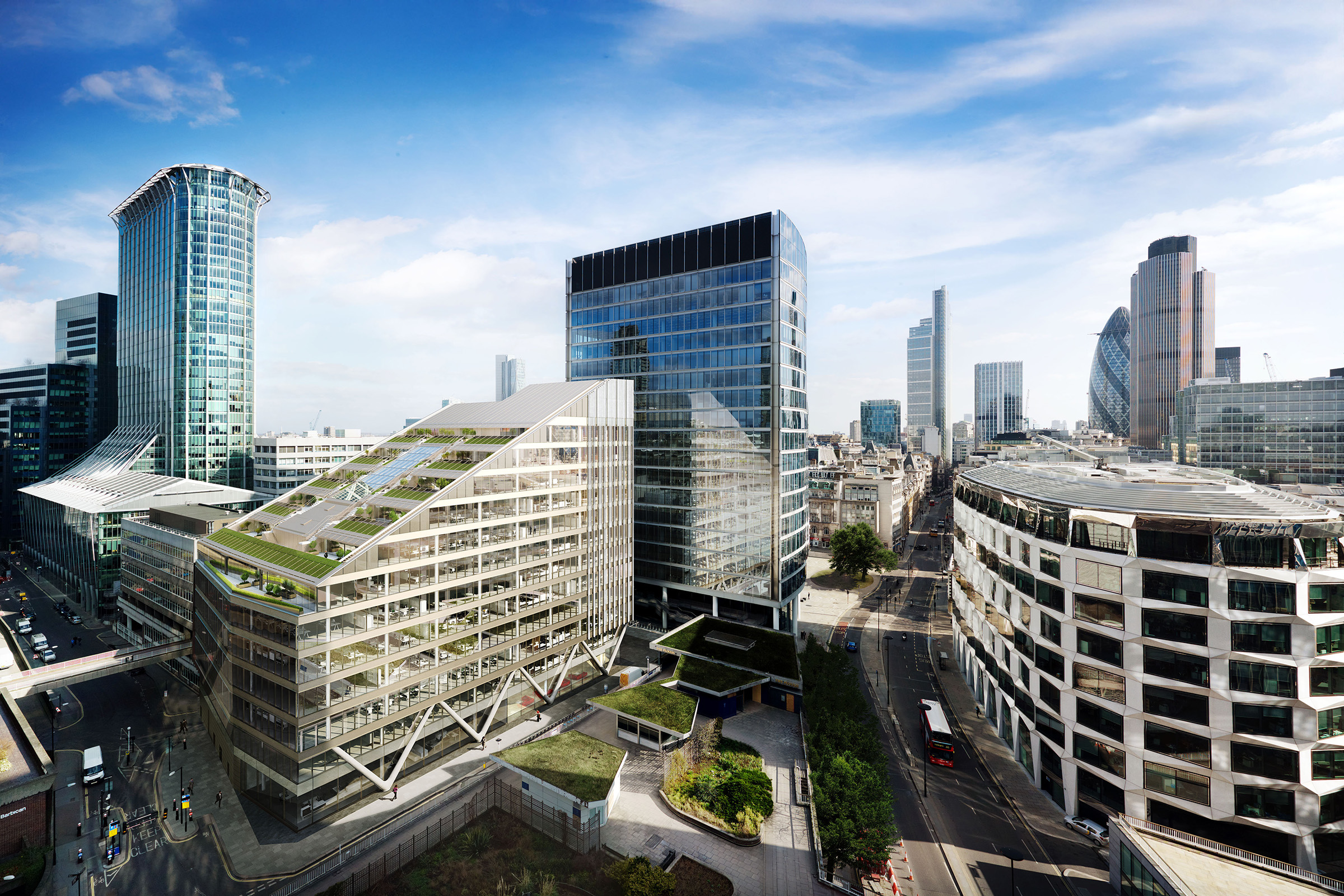
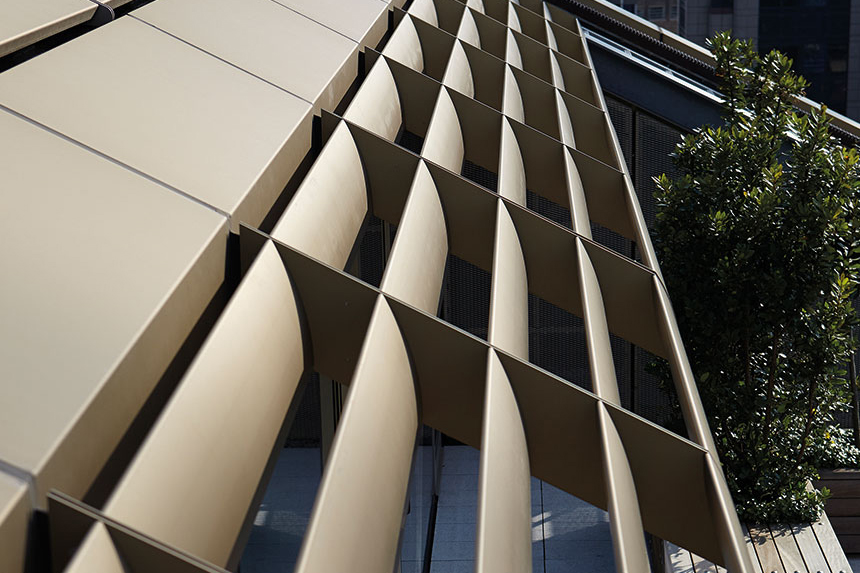
The architectural clarity of this response is matched by its technical performance. Moorgate Exchange is designed as a high-performing and enduring workplace. The project achieved both BREEAM “Excellent” and LEED Platinum certification—reflecting an integrated approach to sustainability that runs through its structure, systems, and spatial strategies.
With its confident silhouette, carefully detailed façade, and refined public interface, Moorgate Exchange articulates a workplace for contemporary urban life, one that addresses complexity through precision and transforms constraint into opportunity.
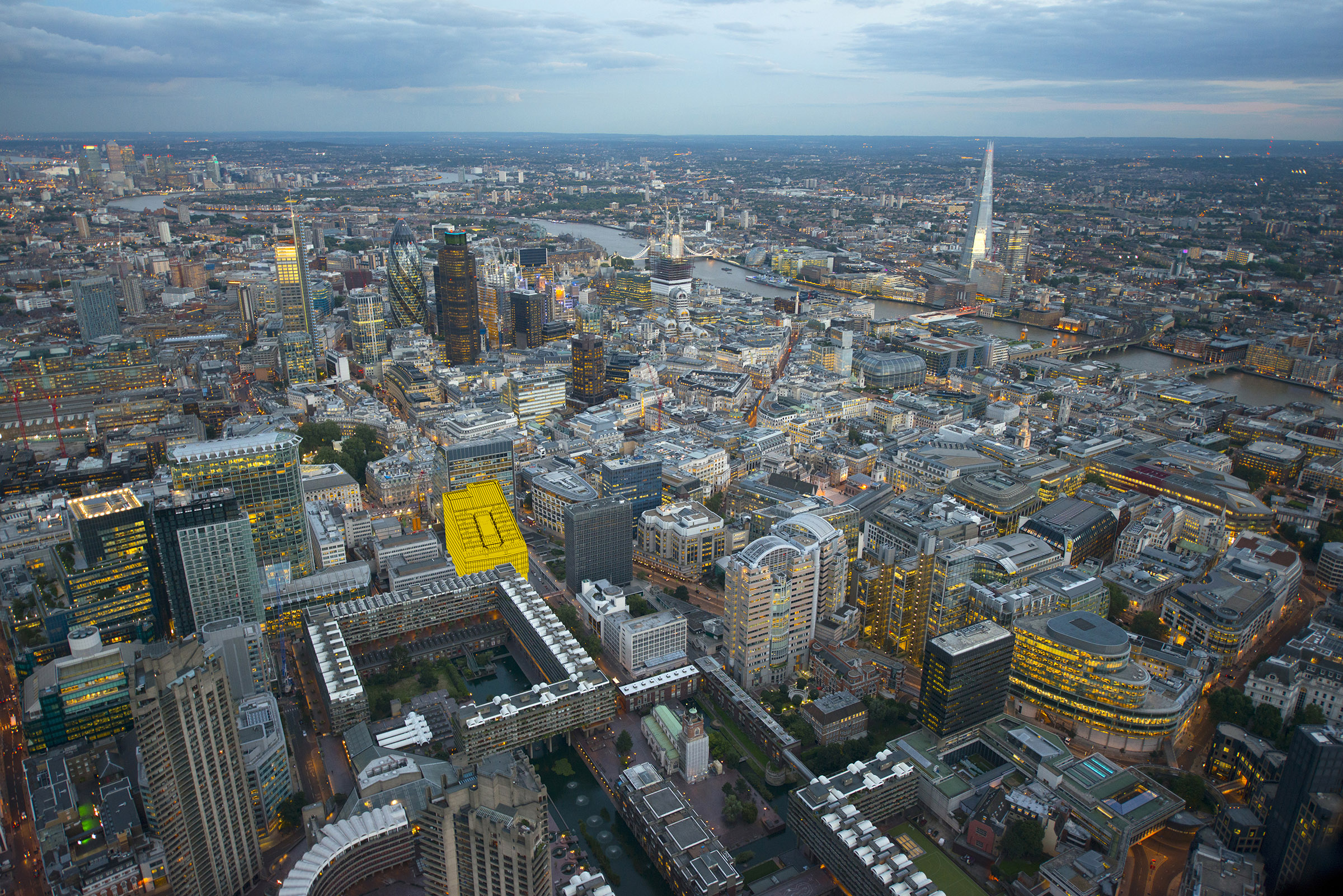
The Site
Occupying a 0.28-hectare corner plot on Moor Lane, just north of London Wall, the site of Moorgate Exchange sits at a critical junction within the evolving fabric of the City. Bounded by Fore Street to the south, Fore Street Avenue to the east, and facing the Barbican Estate to the west, it mediates between the commercial core and a varied urban texture shaped by infrastructure, heritage, and housing.
Previously home to the Fore Street telephone exchange, the site retained a mid-century industrial character defined by internalised functions and minimal civic presence. Below ground, operational Crossrail tunnels and long-standing electrical substations established critical design parameters—informing massing, construction sequencing, and spatial strategy from the outset. These constraints were not erased, but integrated—guiding massing, orientation, and construction methodology.
The surrounding context reveals a dynamic interplay of programmes and scales. To the west, the Barbican’s Willoughby and Andrews House bring residential nuance; to the north, the Moorfields site anticipates a transport-oriented redevelopment; to the east, Moor House contributes to a growing commercial cluster; while to the south, the green edge of St Alphage Gardens introduces rare civic permeability.
Positioned at the intersection of civic openness, residential nuance, and infrastructural complexity, the site provided a rare opportunity to restore coherence within a layered urban grain. Moorgate Exchange responds to this context through a measured architectural strategy—translating its constraints into a built form that is both composed in presence and resilient in function.
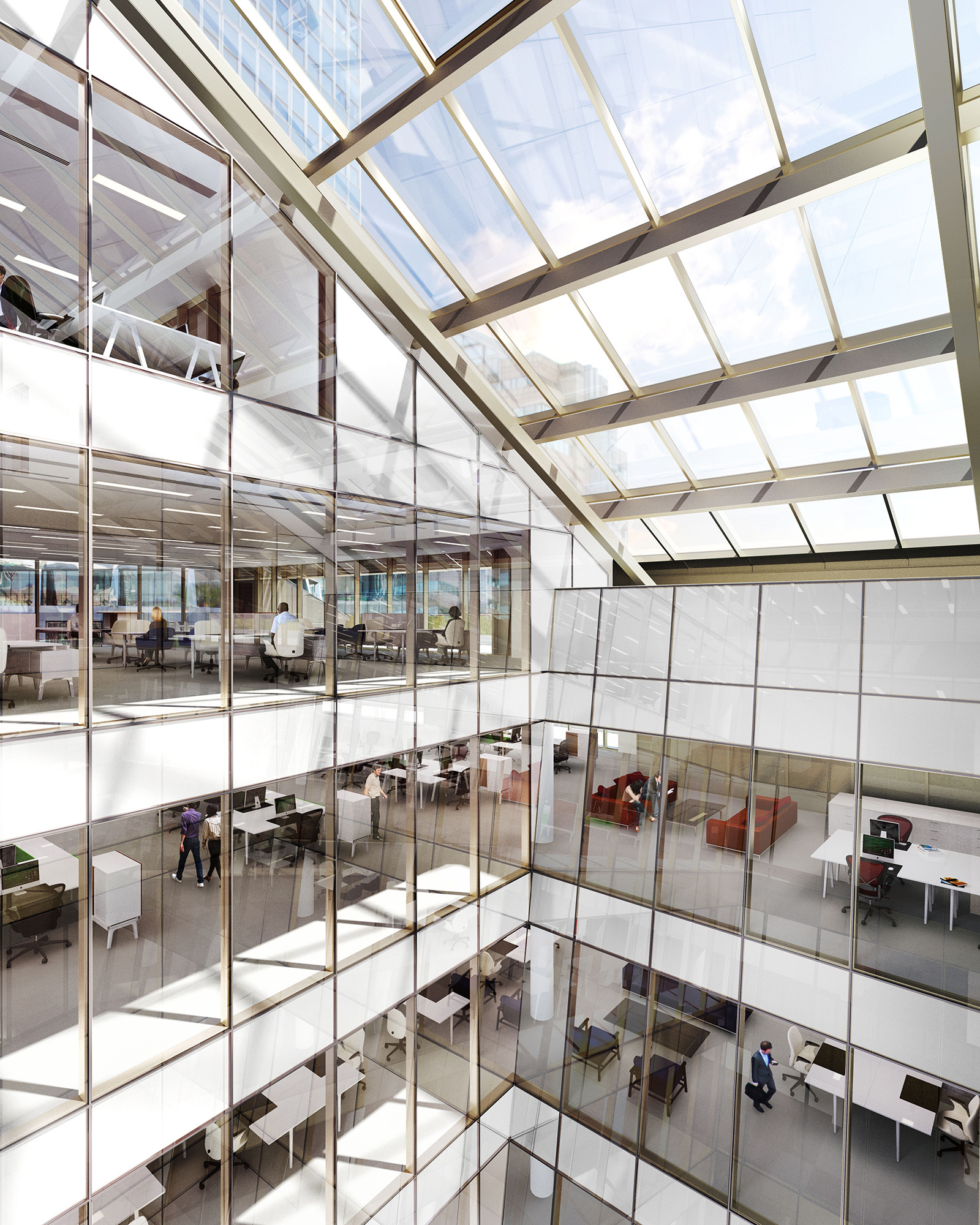
The Scheme
HKR’s design for Moorgate Exchange emerges from a precise understanding of urban constraints and an ambition to craft a workplace of clarity, performance, and identity. The building’s stepped massingshaped in response to protected view corridors towards St Paul’s Cathedral and daylight requirements of the adjacent Barbican Estate, establishes more than compliance: it sets the framework for a spatial strategy that unites form, function, and experience.
This terraced configuration enables panoramic views and generous outdoor spaces while maintaining sensitivity to surrounding scales. HKR’s approach centres on a distinctive design move: the externalisation of the vertical escape route as a sequence of open-air walkways threaded through planted terraces. This reconfiguration eliminates the need for a second internal core, enabling generous, column-free floorplates while enhancing the building’s urban presence with a dynamic stepped silhouette. The circulation strategy is seamlessly integrated into the architecture, merging function, form, and landscape into a coherent whole.


Moorgate Exchange exemplifies a design approach that transforms regulatory and contextual pressures into architectural distinctiveness.
Internally, the building delivers twelve levels of flexible workspace arranged around a compact central core. Typical floorplates span 15.5 metres, supporting a wide range of tenant configurations, from single-occupier headquarters to co-working environments. A full-height atrium brings natural light into the centre of the plan and provides a visual anchor that enhances orientation and experience.
Moorgate Exchange exemplifies a design approach that transforms regulatory and contextual pressures into architectural distinctiveness. Its circulation strategy is not an afterthought, but a unifying element—linking levels, opening terraces, and defining a silhouette that is both expressive and efficient.
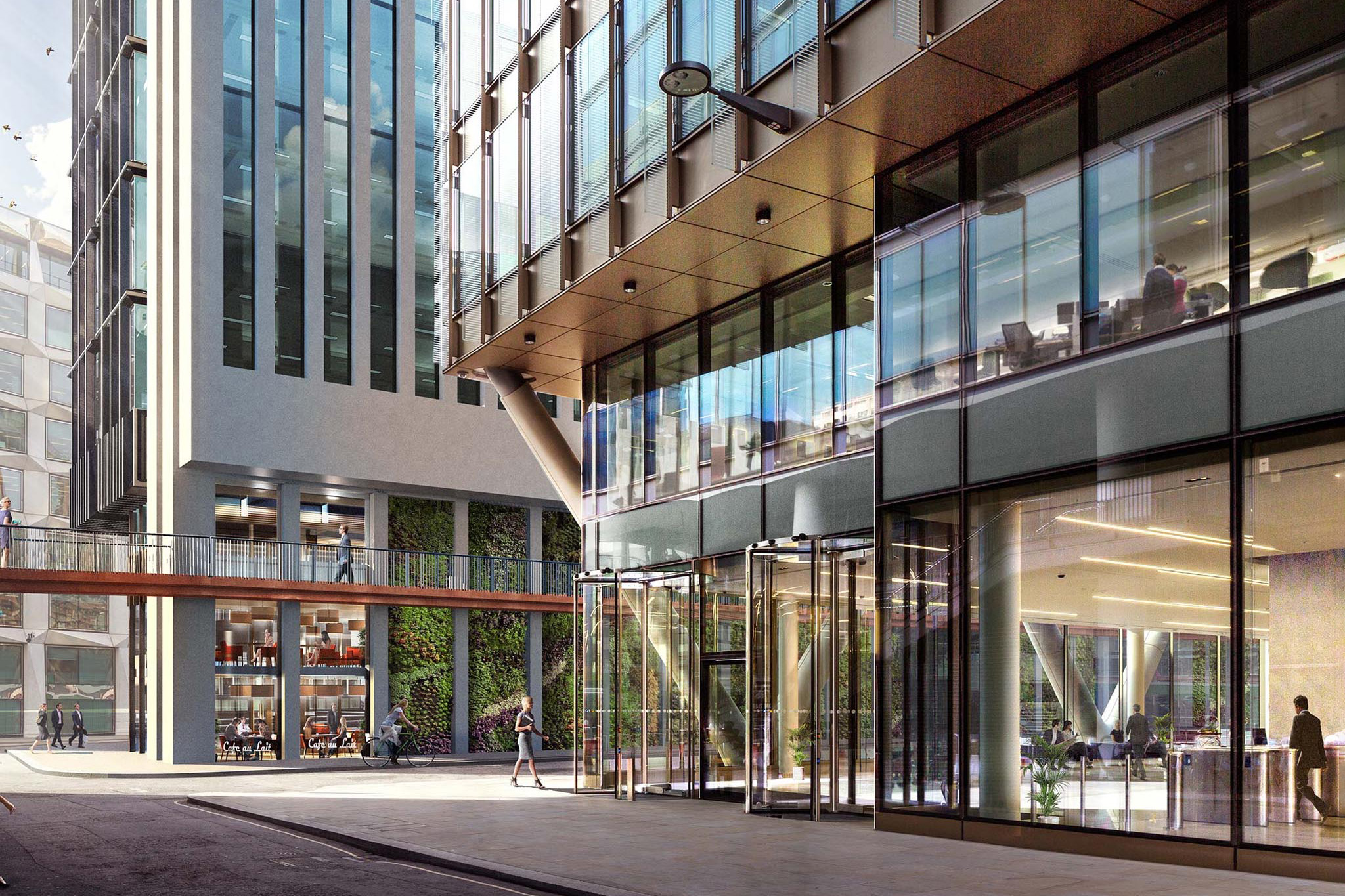
Structure & Engineering
Moorgate Exchange rises above one of the most technically complex plots in the City—defined by live Crossrail tunnels,
deep service corridors, and a compact, irregular footprint. In response, the structural strategy was developed not simply
to overcome these challenges, but to integrate them into the architectural logic of the building.
A rhythmic sequence of V-shaped perimeter columns anchors the building at street level, guiding structural loads away from sensitive zones below while lending a distinctive identity to the façade. These sculptural supports bring both performance and presence—framing the Fore Street frontage with a sense of material clarity and calm precision.
Within, a steel frame enables wide-span, column-free floorplates that support a variety of office configurations. This approach also allowed for the efficient integration of services, minimising the depth of structural zones and preserving generous internal heights throughout. Above level six, as the massing begins to step back, a lightweight cantilevered system supports the planted terraces—maintaining spatial continuity while accommodating the technical demands of landscaping.

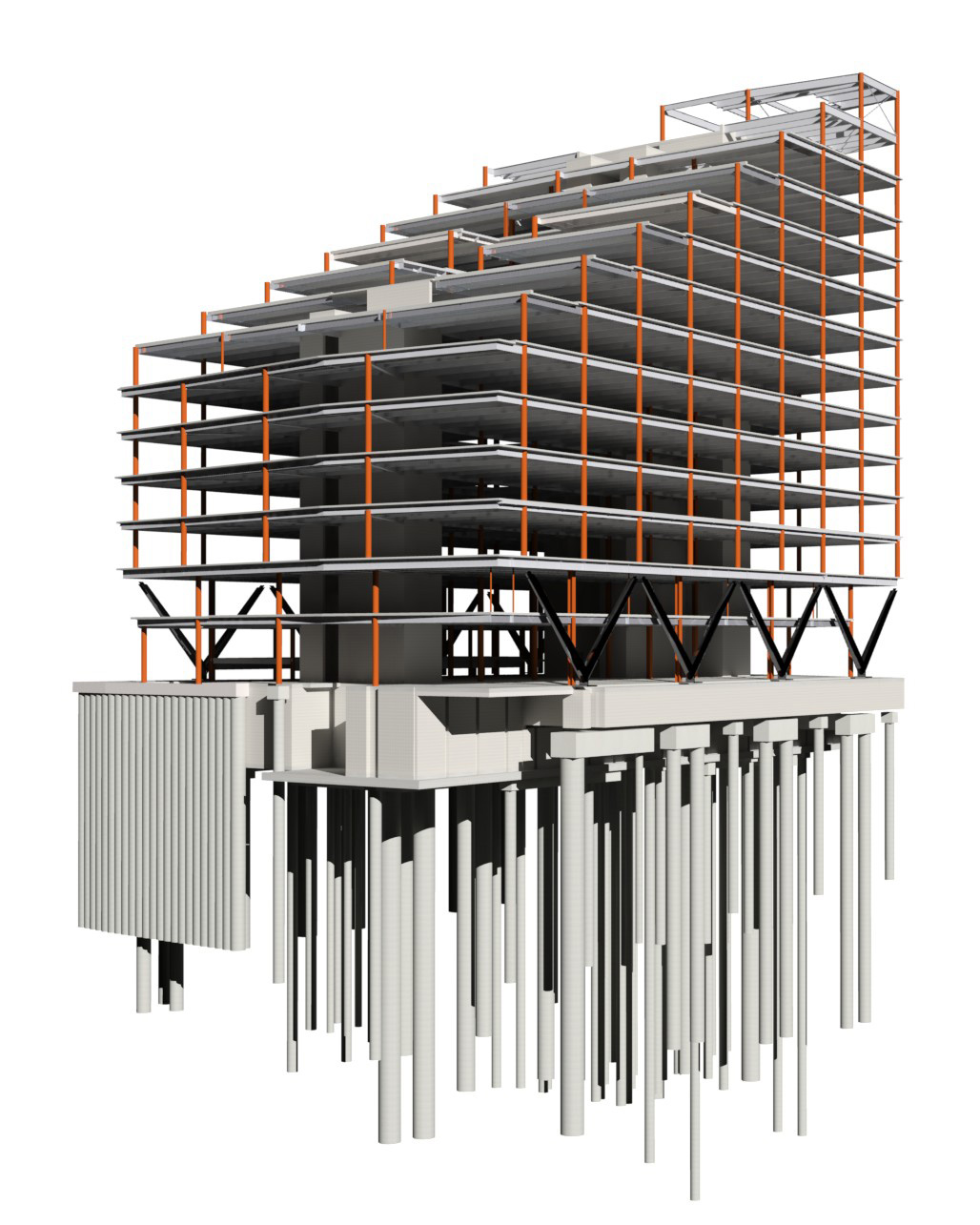
Façade and Materials
The façade of Moorgate Exchange is designed as an integrated system that unites environmental performance with architectural clarity. Responding to orientation, context, and internal function, each elevation contributes to a cohesive and adaptable envelope.
A unitised glazing system wraps the building, optimised for daylight and energy control. On the east and west façades, vertical bronze-anodised fins provide solar shading while introducing a vertical cadence that reflects the building’s structural rhythm. These fins also enhance depth and articulation, creating subtle shifts in perception as light conditions change throughout the day.
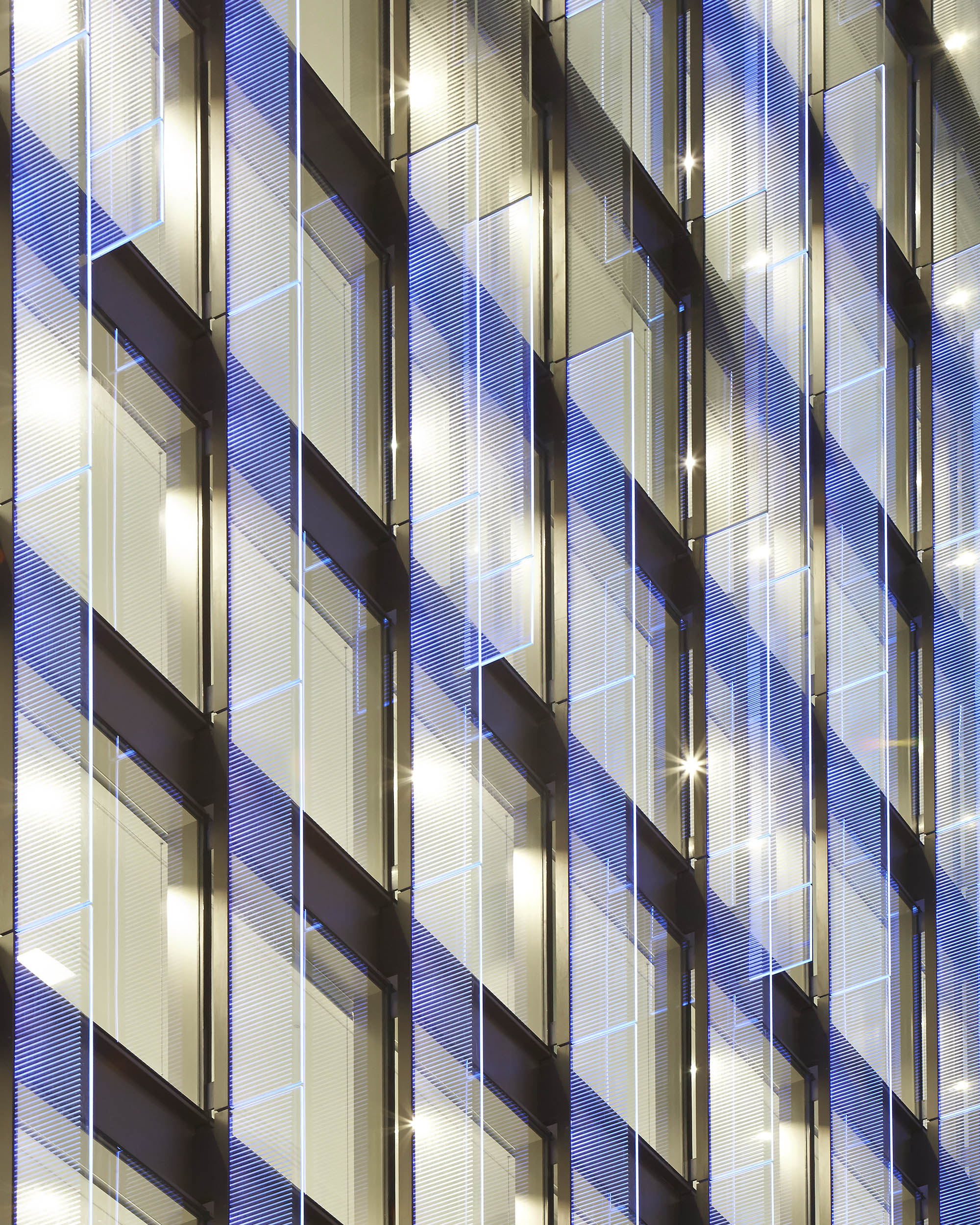
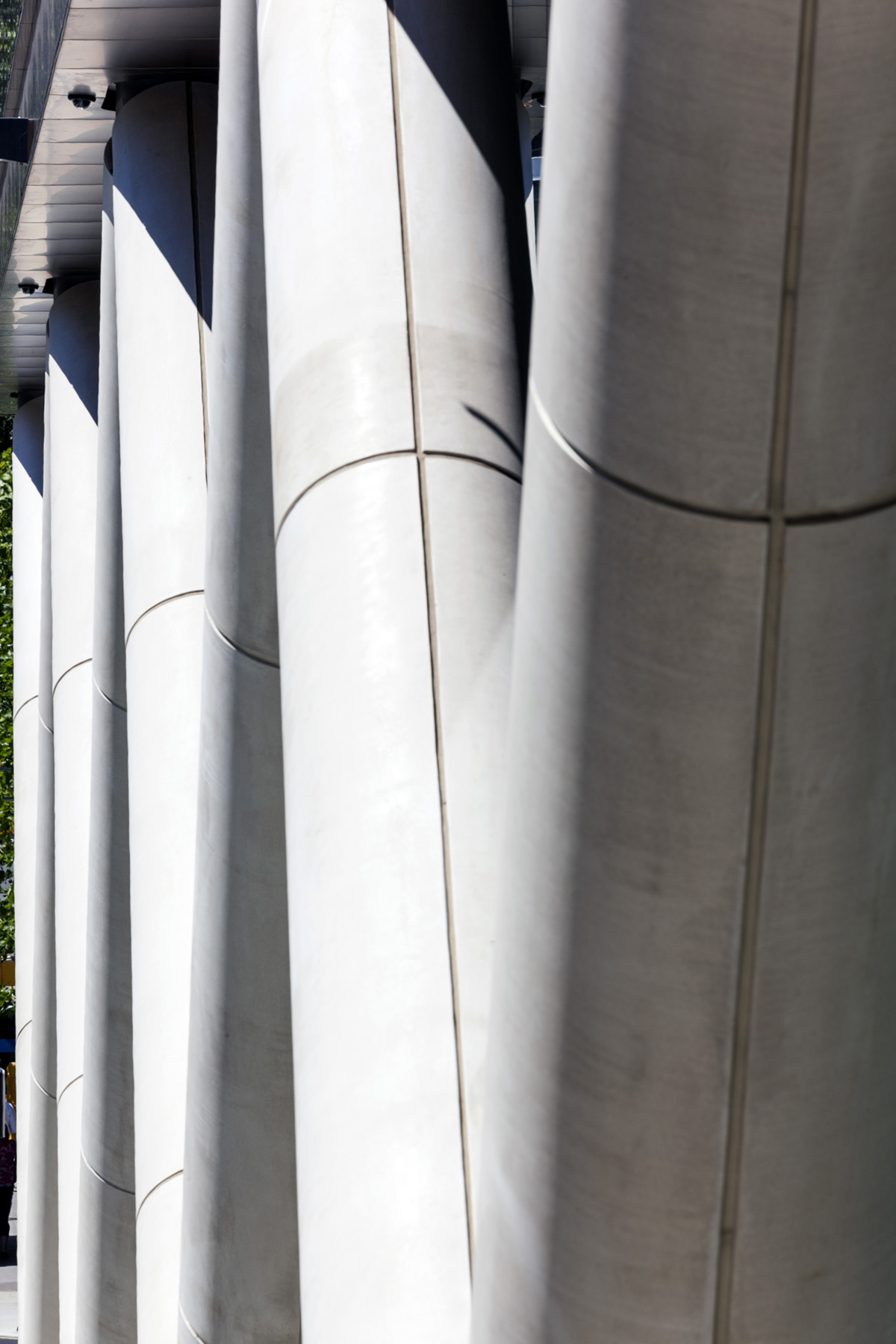
The south elevation adopts triple-glazed, high-performance modules supported by horizontal aluminium louvres. These shading devices address solar gain and contribute to the clarity of the building’s civic frontage. The main entrance is framed by slender vertical fins that rise above the triple-height lobby, offering a sense of scale and drawing attention to the point of arrival. At dusk, these elements are softly illuminated, reinforcing the building’s presence along Fore Street and ensuring visual continuity between day and night. At street level, stone cladding introduces material weight and texture, grounding the building within its urban context. The contrast between the solid base and the glazed upper levels creates a clear architectural hierarchy, defining the public realm with precision and calm confidence.
The landscaped terraces continue the facade’s language upward. Glazed balustrades and bronze mesh panels extend the visual rhythm vertically, while integrated planting softens the massing and strengthens the connection between the building and its surroundings.
Together, the façade system achieves a careful balance between performance, identity, and urban responsiveness—supporting the project’s broader ambition to create a refined, enduring workplace within the City of London.
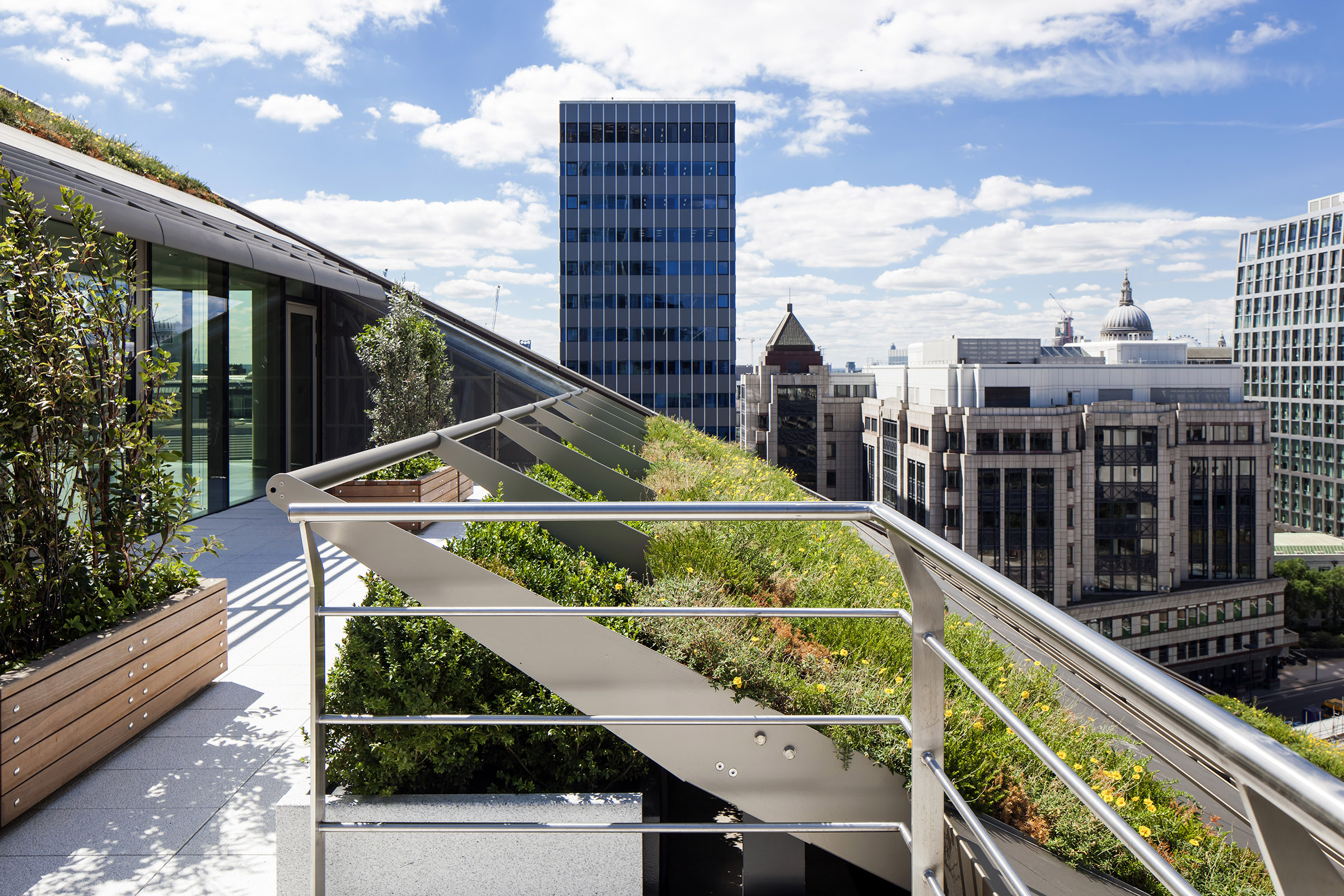
Sustainability
The project achieved BREEAM “Excellent” and LEED Platinum certification under updated performance standards, positioning it as a benchmark for environmental responsibility within dense city centre conditions. This outcome reflects a design strategy that integrates environmental performance with architectural intent, rather than treating sustainability as an external requirement.
The building’s compact core and open-plan floorplates optimise flexibility and reduce material intensity. By resolving the secondary means of escape through an external circulation route, the internal layout remains efficient and uncluttered—supporting both spatial quality and long- term adaptability. This spatial efficiency also reduces the operational energy footprint, as circulation zones are consolidated and daylight reaches deep into the plan via a central atrium.

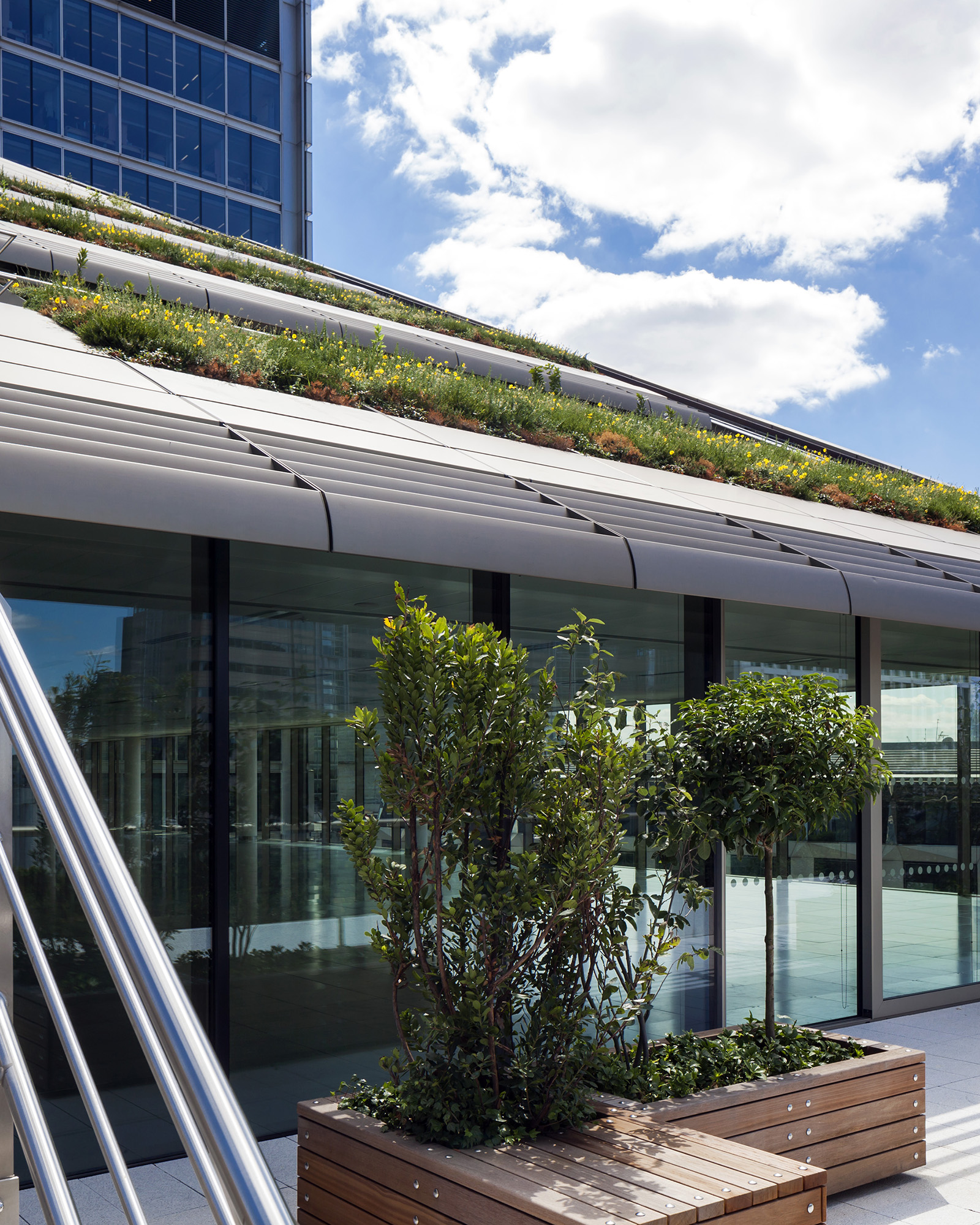
Moorgate Exchange transforms urban limitations into compositional opportunity, setting a precedent for integrated, high-performance city architecture.
Passive environmental strategies are layered throughout. The façade responds to orientation with calibrated shading elements, reducing solar gain while maintaining access to natural light. Landscaped roof terraces offer thermal buffering, biodiversity value, and outdoor amenity across multiple levels. These planted elements also support rainwater attenuation and improve the microclimate of the building envelope.
Material choices prioritise durability, low embodied carbon, and circularity. Recycled aggregates were used in the concrete mix; greywater systems reduce potable water use; and a lightweight steel superstructure enabled the use of a raft foundation, reducing excavation and embodied impact. Mechanical systems—such as LED lighting and high-efficiency fan coil units—were selected to support low operational energy use while maintaining high occupant comfort.
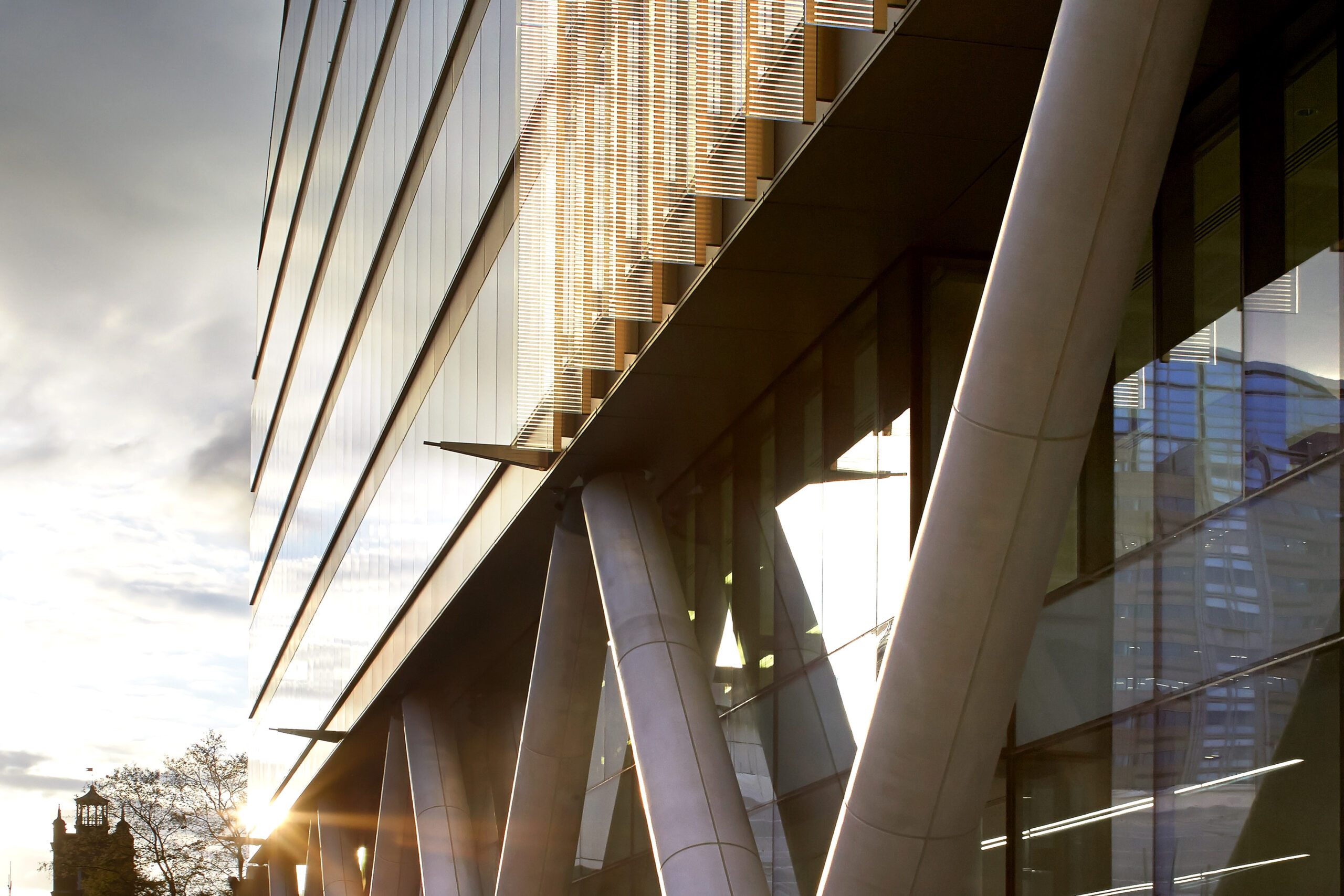
Through this layered approach, Moorgate Exchange delivers not only on performance metrics, but on the broader goal of urban sustainability—offering a workplace that is energy-conscious, materially intelligent, and spatially generous.
